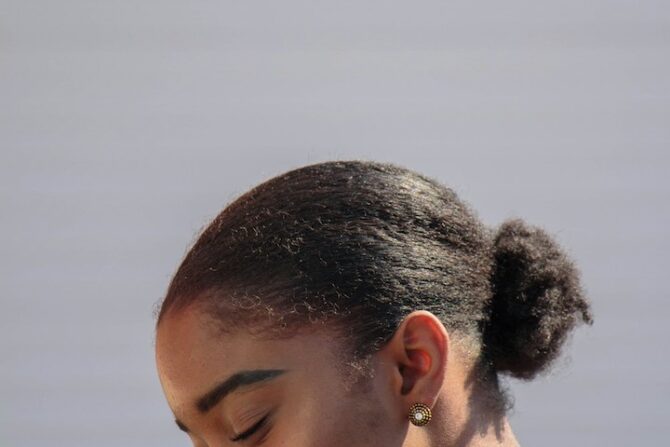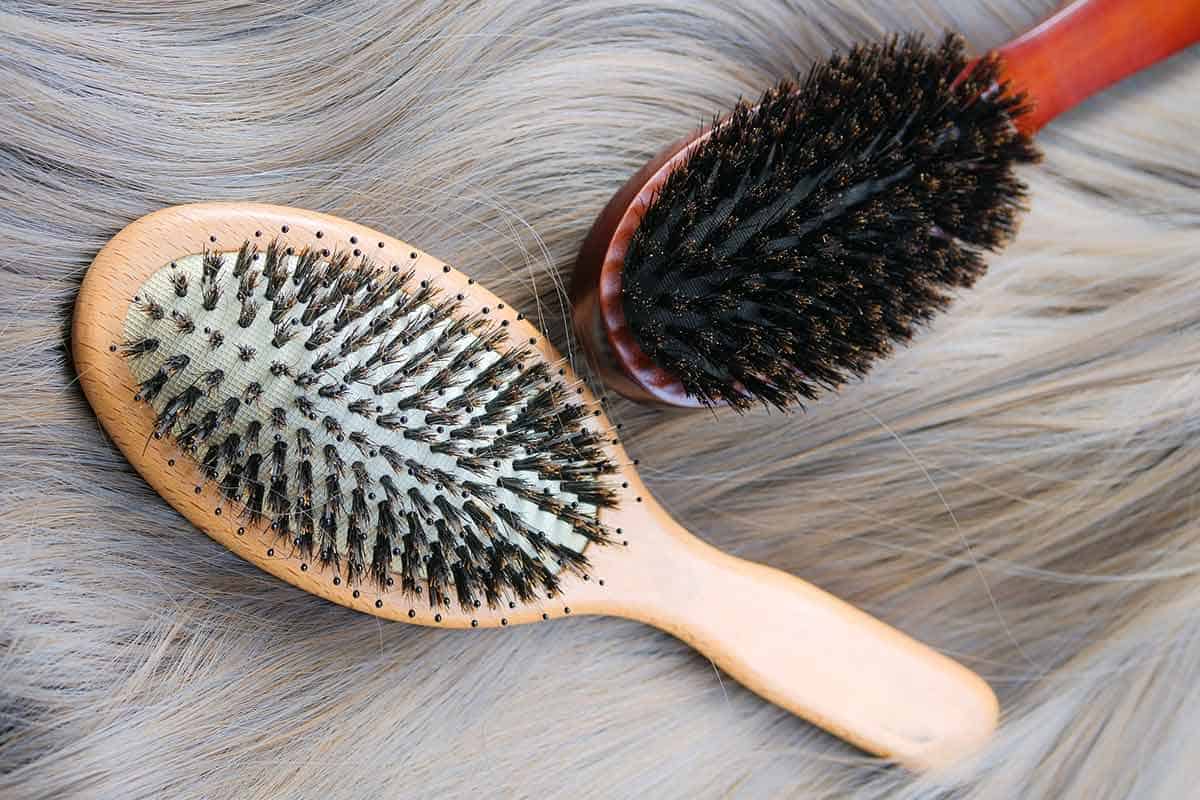If you’ve ever washed your hair at night and woke up with a greasy scalp by morning, I know exactly how you feel. It’s annoying, right? You start wondering if your shampoo is too harsh, or maybe you’re not washing enough. I used to think my hair was just “naturally oily,” and that there was nothing I could do. Turns out, that wasn’t true at all.
When I started looking into scalp oil control methods, everything changed. I stopped chasing that squeaky-clean feeling and started learning what my scalp actually needed. Spoiler alert — it wasn’t more shampoo.
This post is for you if your scalp gets oily fast or your hair just won’t stay fresh. I’ll share what I’ve learned, what’s worked for me, and a few things I wish I knew sooner.
Table of Contents
Key Takeaways
- You don’t need to strip your scalp — you need to balance it.
- Washing too often only makes things worse.
- Ingredients like tea tree oil, aloe vera, and witch hazel help calm oil production.
- Conditioner is your friend, not your enemy.
- Diet and stress play a bigger role than most people realize.
- Scalp exfoliation once a week helps remove buildup and refresh your scalp.
Understanding Why the Scalp Gets Oily
Let’s start here because this part changed how I saw my hair completely. Your scalp produces oil (called sebum) for a reason. It’s your body’s natural way of keeping your scalp healthy. Without it, your skin would be dry and tight, and your hair would look dull.
The problem starts when the scalp produces more oil than it should. That can happen for a few reasons:
- Over-washing. When you wash too often, your scalp thinks it’s dry and tries to fix it by making more oil.
- Hormones. If your hormones fluctuate — maybe from stress, your cycle, or even what you eat — your oil glands can go into overdrive.
- Product buildup. Too much conditioner, styling products, or even dry shampoo can trap oil and make your scalp feel greasy.
- Weather and habits. Humidity, sweat, and touching your hair too often can all make things worse.
When I first realized my “clean hair routine” was actually making things worse, I laughed a little. I’d been stripping my scalp dry, and my body was just trying to protect itself. Once I stopped fighting it, things started balancing out.
That’s really the goal here — balance, not complete dryness.
Scalp Oil Control Methods That Work
I’ve tested a lot of things, from expensive products to home remedies. Some helped, others just made me roll my eyes. Here’s what actually worked and felt sustainable — not a quick fix that made my scalp angry two days later.
1. Adjusting How You Wash Your Hair
I used to wash my hair every single day. It felt impossible not to — my scalp would get oily by the next morning. But the more I washed, the worse it got.
When I finally gave my scalp a break, I noticed something surprising. The first few days were rough, but after about a week, my scalp started calming down. It stopped overproducing oil.
If you’re in the same boat, try easing into it:
- If you wash daily, stretch it to every other day.
- If you already wash every two days, try every three.
It’s not about skipping washes forever — it’s about helping your scalp find its rhythm again.
When you do wash, go for a gentle, sulfate-free shampoo. Look for something that says “balancing” or “clarifying” without being too harsh. My trick is to shampoo twice — the first wash breaks down oil and buildup, the second actually cleans your scalp.
And always rinse well. You’d be surprised how much residue sticks around if you rush it.
Also Read: Rosemary Oil: The Simple Secret for Stronger Hair and a Healthier Scalp
2. Using the Right Ingredients
This is where things got interesting for me. Once I started paying attention to ingredients, I realized not all shampoos or treatments are created equal. Some only mask oiliness; others help manage it from the root.
Here are a few ingredients that made a difference:
- Tea tree oil: Keeps the scalp fresh and clean without stripping it.
- Aloe vera: Helps soothe irritation and regulate oil production.
- Witch hazel: Gently removes excess oil while keeping moisture balanced.
One of my favorite DIY mixes is a simple scalp oil treatment. I combine a few drops of tea tree oil with a tablespoon of jojoba oil, massage it into my scalp, and leave it on for about 15 minutes before washing. It feels refreshing, and over time, it really balanced out my scalp.
If you prefer something even easier, try a diluted apple cider vinegar rinse (one part vinegar to three parts water). Use it after shampooing once a week — it removes buildup and restores your scalp’s natural pH. The smell fades quickly, I promise.
3. Balancing Moisture
Here’s something I wish someone told me earlier: skipping conditioner doesn’t reduce oil. It actually does the opposite.
When your scalp feels dry, your body tries to fix that by making more oil. I used to skip conditioner completely because I thought it made my hair greasy, but that just made the problem worse.
Now, I use a lightweight conditioner and apply it only to the mid-lengths and ends of my hair. It keeps everything soft without overwhelming my scalp. Some days, I even use a leave-in conditioner just on my ends, especially if I’ve used a clarifying shampoo.
It’s funny how much difference that small change made — my scalp stopped trying so hard to “protect” my hair with extra oil.
4. Managing Your Diet and Stress
You probably saw this one coming, but it’s true: what you eat and how stressed you are can affect your scalp.
When I’m eating a lot of processed food or sugar, my scalp gets oily faster. I didn’t notice it at first, but after tracking it for a while, the pattern was obvious. Adding more leafy greens, nuts, and fish (especially salmon) helped a lot. Drinking enough water did too — dehydration can make your scalp go into overproduction mode.
And stress? Oh, stress is sneaky. I’ve had times when I was under a lot of pressure, and my scalp started producing oil like it was in survival mode.
I don’t have a magic fix for stress, but I’ve learned to slow down. A short walk, a few deep breaths, or even just taking time to do something I enjoy helps. I think the body — and scalp — always finds a way to show how we’re feeling.
5. Exfoliating the Scalp
This one was a game changer for me. I used to exfoliate my face but never thought about my scalp needing the same care.
Over time, product residue, oil, and dead skin pile up there. It clogs follicles and keeps your scalp from breathing properly. Once I started exfoliating once a week, I noticed my hair felt lighter and stayed fresher for longer.
You can buy a scalp scrub or make your own. I usually mix a tablespoon of sugar with a bit of olive oil and massage it gently into my scalp before shampooing. It’s simple, affordable, and it works.
Just don’t scrub too hard — your scalp isn’t the same as your skin. Gentle circular motions for a few minutes do the trick.
What Not to Do When Managing Scalp Oil
There are a few habits that sneak up on us and make oil control harder. I’ve made most of these mistakes myself.
- Over-brushing: It spreads oil from your scalp through your hair.
- Touching your hair too often: The natural oils on your hands add to the buildup.
- Using too many products: Layers of serums, sprays, and creams suffocate your scalp.
- Skipping rinses: Not washing out shampoo or conditioner completely leaves residue that traps oil.
And here’s a big one — don’t fall for harsh “oil control” products that promise overnight results. Most of them just dry out your scalp, and within a few days, the oiliness comes back even worse.
Gentle consistency beats quick fixes every single time.
Simple Weekly Routine for Scalp Oil Control
If you like having a simple plan, this is what works for me week to week. It’s not rigid — just a framework you can adjust to your lifestyle.
Day 1:
- Wash your hair with a mild balancing shampoo.
- Rinse thoroughly.
- Apply lightweight conditioner only to your ends.
Day 3:
- Skip the shampoo. Use dry shampoo if needed.
- Massage your scalp gently to boost circulation.
Day 4:
- If your scalp feels heavy, do a diluted apple cider vinegar rinse.
Day 5:
- Wash again — two quick rounds of shampoo help clear buildup.
Weekend:
- Exfoliate or do a scalp oil treatment (like tea tree and jojoba).
- Let your hair rest from styling products.
It’s a rhythm that feels good once you get used to it. My scalp stays cleaner, my hair feels lighter, and I don’t have to fight that constant greasy feeling anymore.
Conclusion
Finding the right scalp oil control methods took me time. I had to unlearn a lot of what I thought was “good hair care.” The truth is, your scalp doesn’t want to be stripped or scrubbed raw — it just wants balance.
If you start small, stay consistent, and listen to how your scalp reacts, it’ll respond. It always does. There’s something satisfying about waking up with hair that still feels fresh from the day before.
Your scalp’s not the problem — it’s just reacting to what it’s been given. Once you treat it kindly, everything shifts.
Frequently Asked Questions
How often should I wash my hair if it gets oily fast?
Try every other day first. Your scalp will need a little time to adjust, but it’ll start balancing itself soon.
Can I still oil my scalp if it’s already oily?
Yes — in moderation. Light oils like jojoba can actually teach your scalp to slow down oil production.
What if my scalp is oily but my hair ends are dry?
Target your care — shampoo the scalp, condition the ends. Don’t mix the two.
Are salon scalp treatments necessary?
They can help if you have heavy buildup, but consistent at-home care works just as well for most people.



